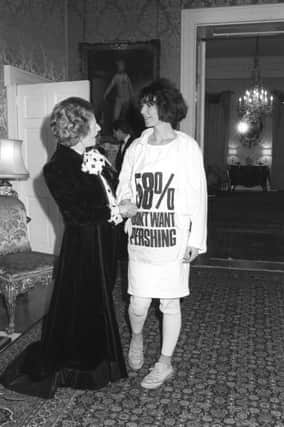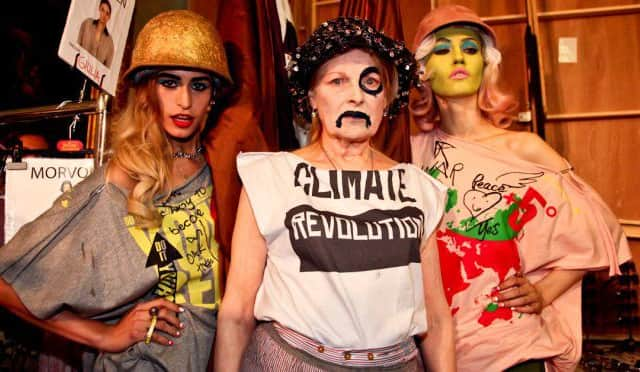Protests they wanted to get off their chest


She had been taken aback in the first place when, in 1984, the fashion designer Katharine Hamnett had turned up at a Downing Street reception wearing a garment of her own creation, emblazoned with a slogan protesting at the proliferation of US Pershing nuclear missiles across Europe.
As Ms Hamnett shook her host’s hand, a dozen flashbulbs went off, and the PM’s intended celebration of London Fashion Week had been subverted.
Advertisement
Hide AdAdvertisement
Hide AdIt was a small hiccup for Anglo-American relations but a seminal moment for clothing as a propaganda weapon – as a new exhibition in Yorkshire recalls The three-month display at the Civic arts centre in Barnsley is believed to be first time the history of the T-shirt has been documented.


Ms Hamnett’s protest before Mrs Thatcher, which she described in a recent article as “an incredible photo opportunity, whatever I thought of her”, was in what was already a long tradition of “protest fashion”.
It had begun as early as 1948, when supporters of the US presidential candidate Thomas E Dewey were kitted out with T-shirts bearing the legend “Dew-it-with Dewey”.
Nine years earlier, the first known T-shirts with any form of wording had been seen briefly, in The Wizard of Oz,. when workers taken on to re-stuff the scarecrow had worn green tops bearing the word Oz.
Advertisement
Hide AdAdvertisement
Hide Ad“Plain T-shirts were worn by American servicemen during the Second World War, but they became really popular afterwards, when actors like Marlon Brando and James Dean turned them into fashion statements,” said Jason White, the assistant curator at Barnsley.
In 1968, the garments were given a semi-official seal of recognition when British athletes were issued with badged T-shirts as part of their kit.
The following year, the government used them for the first time, as part of an anti-smoking advertising campaign, and at around the same time, music fans began wearing shirts bearing the name of their favourite band.
“They were originally just for the roadies, but the fans saw them and they wanted them, too,” said Mr White.
Advertisement
Hide AdAdvertisement
Hide AdT-shirts have also been harnessed for fundraising, from Band Aid to Comic Relief. But it was with political activism that they became principally associated, especially during the punk rock era of the 1970s and, in Yorkshire, the miners’ disputes of the following decade.
The new exhibition, which features around 150 examples of T-shirt art, with an accompanying display explaining their typography, was conceived in part by the Civic’s curator, David Sinclair, as a joint venture with London’s Fashion and Textile Museum.
It includes a private collection by the controversial designer Vivienne Westwood, who in 1971 began selling shirts with slogans from a shop in London’s King’s Road.
Dennis Nothdruft, of the Fashion and Textile Museum, said: “The T-shirt has taken on a role as a statement of intent for the wearer.
Advertisement
Hide AdAdvertisement
Hide Ad“It has developed an amazing power to communicate and to create a dialogue between the wearer and the world.”
Mr Sinclair added: “It has been controversial, sexy, political, ironic and just plain cool.”
The exhibition at the Civic, Barnsley, runs from June 23 to September 22.